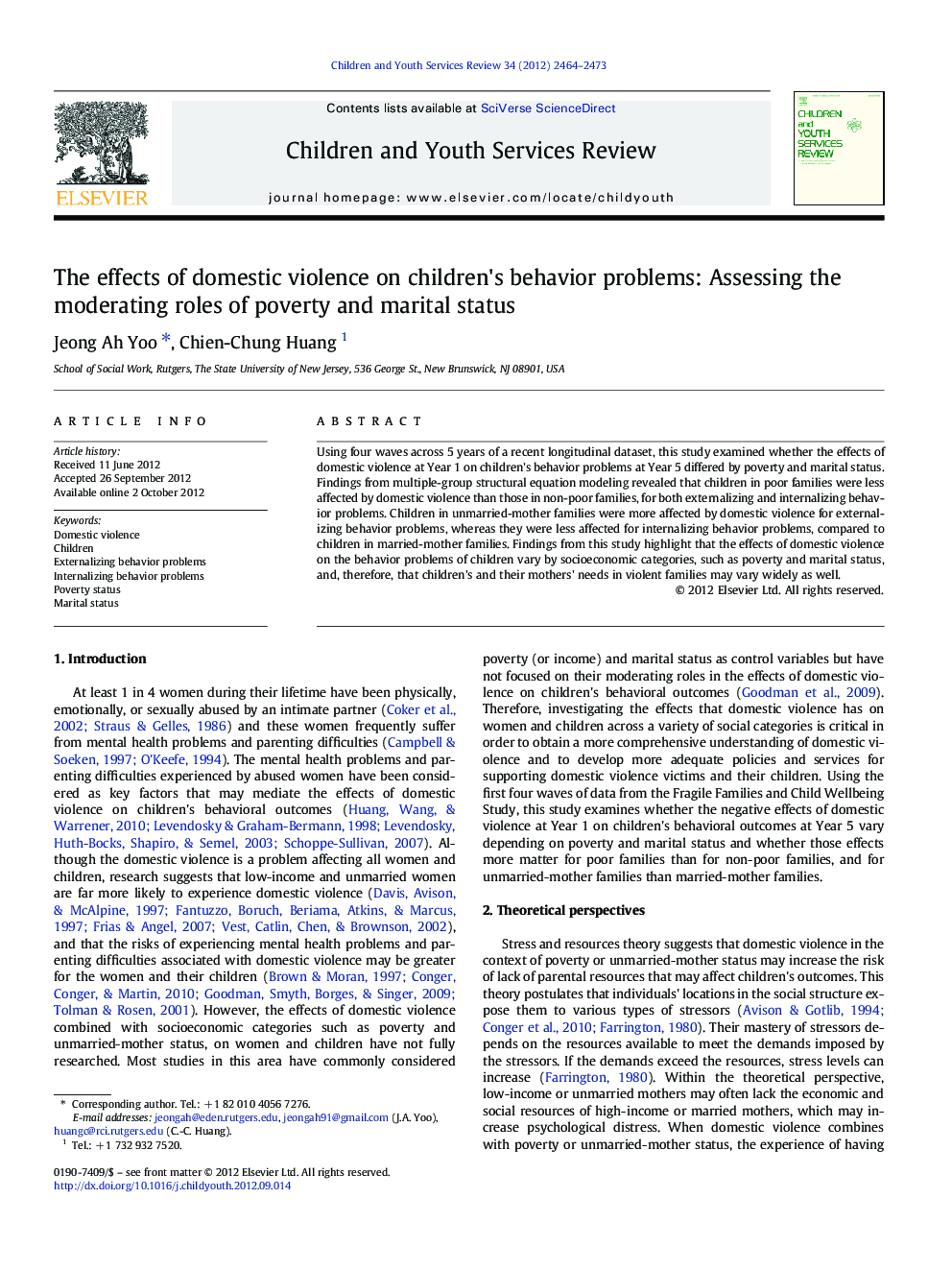| Article ID | Journal | Published Year | Pages | File Type |
|---|---|---|---|---|
| 346318 | Children and Youth Services Review | 2012 | 10 Pages |
Using four waves across 5 years of a recent longitudinal dataset, this study examined whether the effects of domestic violence at Year 1 on children's behavior problems at Year 5 differed by poverty and marital status. Findings from multiple-group structural equation modeling revealed that children in poor families were less affected by domestic violence than those in non-poor families, for both externalizing and internalizing behavior problems. Children in unmarried-mother families were more affected by domestic violence for externalizing behavior problems, whereas they were less affected for internalizing behavior problems, compared to children in married-mother families. Findings from this study highlight that the effects of domestic violence on the behavior problems of children vary by socioeconomic categories, such as poverty and marital status, and, therefore, that children's and their mothers' needs in violent families may vary widely as well.
► We examined the effects of domestic violence on child behaviors across subgroups. ► Poverty and marital status moderated the effect of domestic violence. ► Poor families were less affected by the violence than non-poor families. ► Unmarried-mother families were more affected for externalizing behaviors. ► Married-mother families were more affected for internalizing behaviors.
